Painter Victoria Mimiaga brings attention to the overuse of plastic in our society through the lens of classic works of art. See her fascinating portfolio by visiting her website.
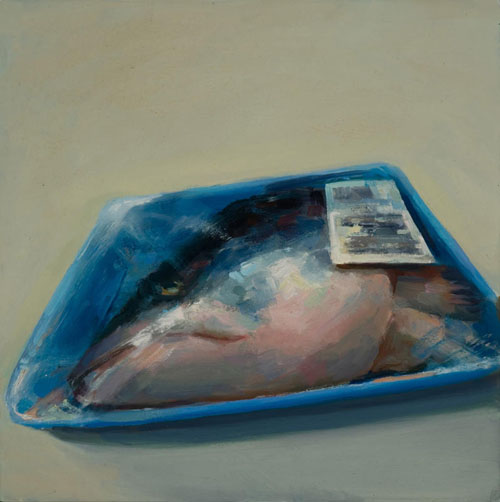
“Fish Head in Plastic” Oil, 12″ x 12″
For quite some time, my chief interest in the still life had been in capturing the quality of reflective surfaces—metal, glass, water, etc. Inevitably, this evolved to include plastic, with all of its good and bad qualities.
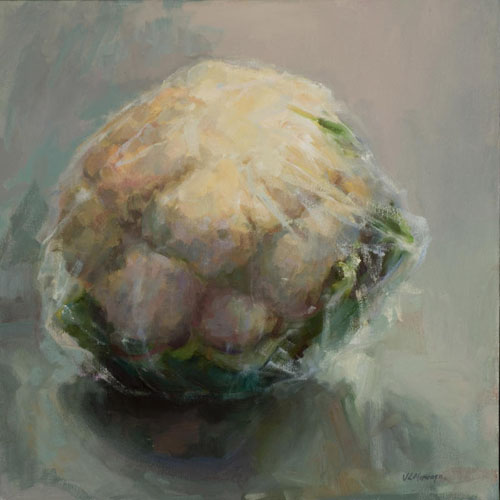
“Cauliflower in Plastic” Oil, 16″ x 16″
Objectively speaking, when lit, plastic has a lovely, reflective quality that can create a sparkling beauty. Depending on the type of plastic used, the object within takes on an exaggerated luster. It’s also, unfortunately, the most overused item in the world.
My early series “Food in Plastic” highlighted this critical issue, and debuted in Cafe Museo at the San Francisco Museum of Modern Art.
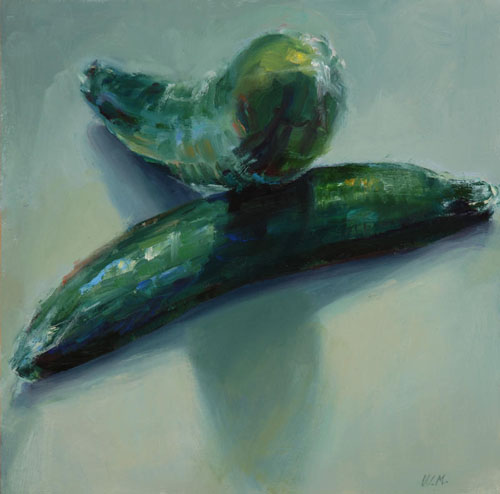
“Shrink Wrapped” Oil, 12″ x 12″
It featured what was happening in supermarket packaging—shrink-wrapped cucumbers or fruit encased in layers of hard plastic. At the time, the awareness of the evils of plastic had not yet reached its current prominence in the public forum.
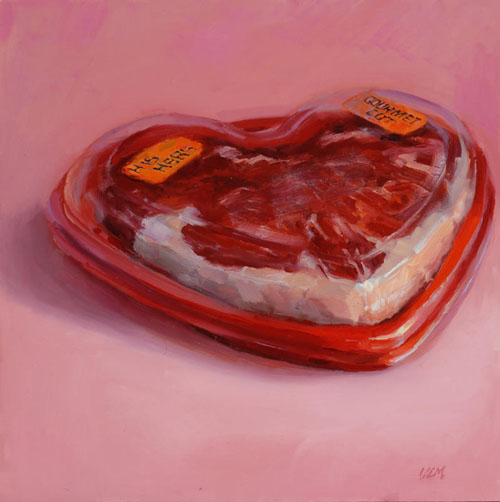
“Heart of Meat” Oil, 12″ x 12″
My rule for the series was simple—I could not make up the imagery. I had to see my model for sale in a grocery store. As it turned out, the imagination of the plastic packaging industry far exceeded my own. I found a Valentine’s Day sirloin steak encased in heart-shaped plastic. I discovered a plastic mold expressly made for half a bundt cake.
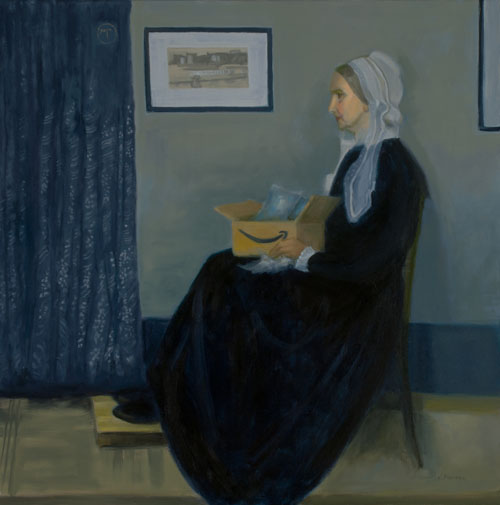
“Special Delivery to Whistler’s Mother” Oil, 30″ x 30″
Today, more than a decade after the MOMA exhibit, the use of plastic packaging has escalated. Aisles of plastic containers containing sliced fruit line the cold cases in supermarkets. Online food and household orders are packaged with large plastic “protective balloons.” (Think of your last Amazon purchase.)
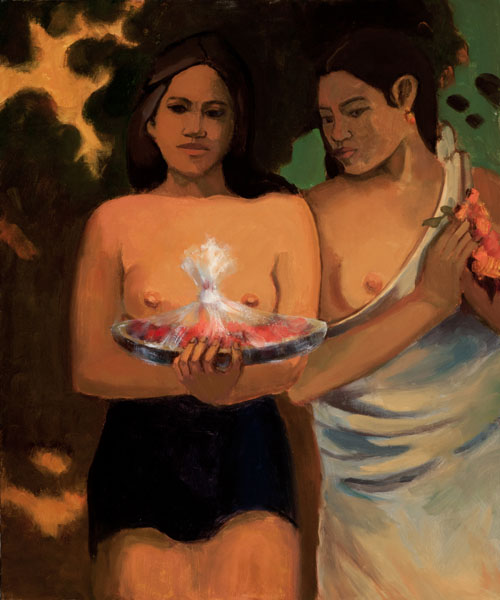
“Gaugin in Plastic” Oil, 20″ x 24″
It appeared to me that we’ve become so surrounded by plastic that we no longer see it. I took this oversight as a challenge.
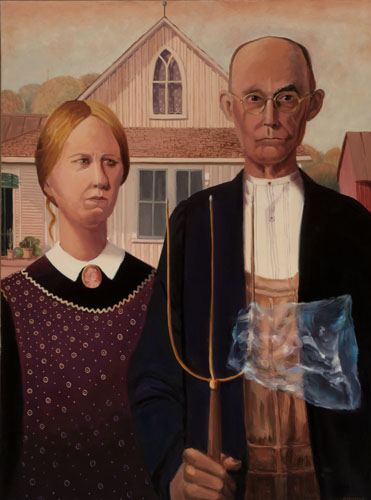
“American Gothic and Plastic” Oil, 30″ x 40″
To make the overuse of plastic visible again, I began rendering plastic out of context. My latest series, “Masters and Plastic” reimagines iconic Old Master paintings by inserting plastic objects in these venerable and familiar works of art.
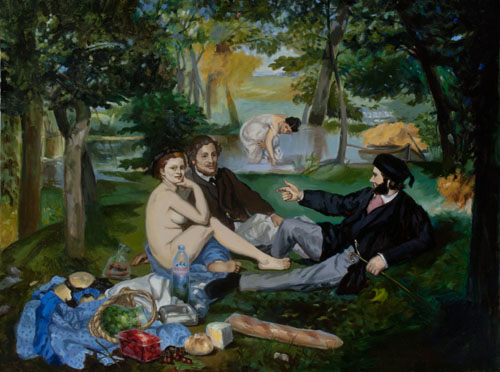
“Manet in Plastic” Oil, 40″ x 30″
A re-creation of Grant Wood’s “American Gothic” reveals a wind-blown plastic bag stuck in the tines of the pitchfork. Manet’s “Luncheon on the Grass” includes a bottle of Evian water and other plastic-encased picnic items.
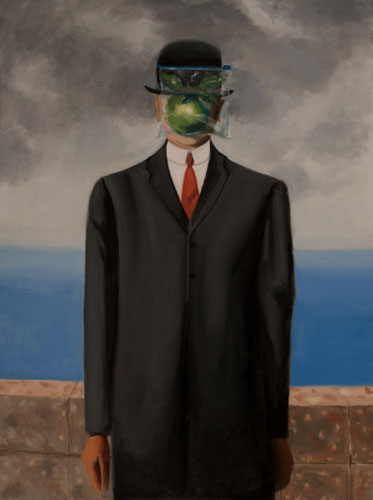
“Magritte in Plastic” Oil, 30″ x 40″
The green apple in Magritte’s “Son of Man” is now encased in a zip-locked Glad bag.
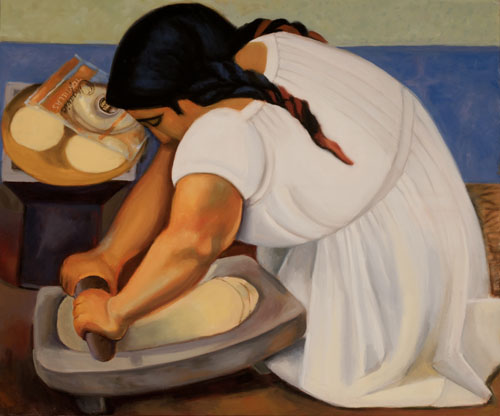
“Diego and Plastic” Oil, 36″ x 30″
Now that the use, misuse and disposal of plastic has generated global awareness, my hope is that “Masters and Plastic” will add an artful, acerbic and historic dimension to this large and devastating modern problem.
Artist Victoria Mimiaga invites you to follow her on Facebook and Instagram.


Speak Your Mind